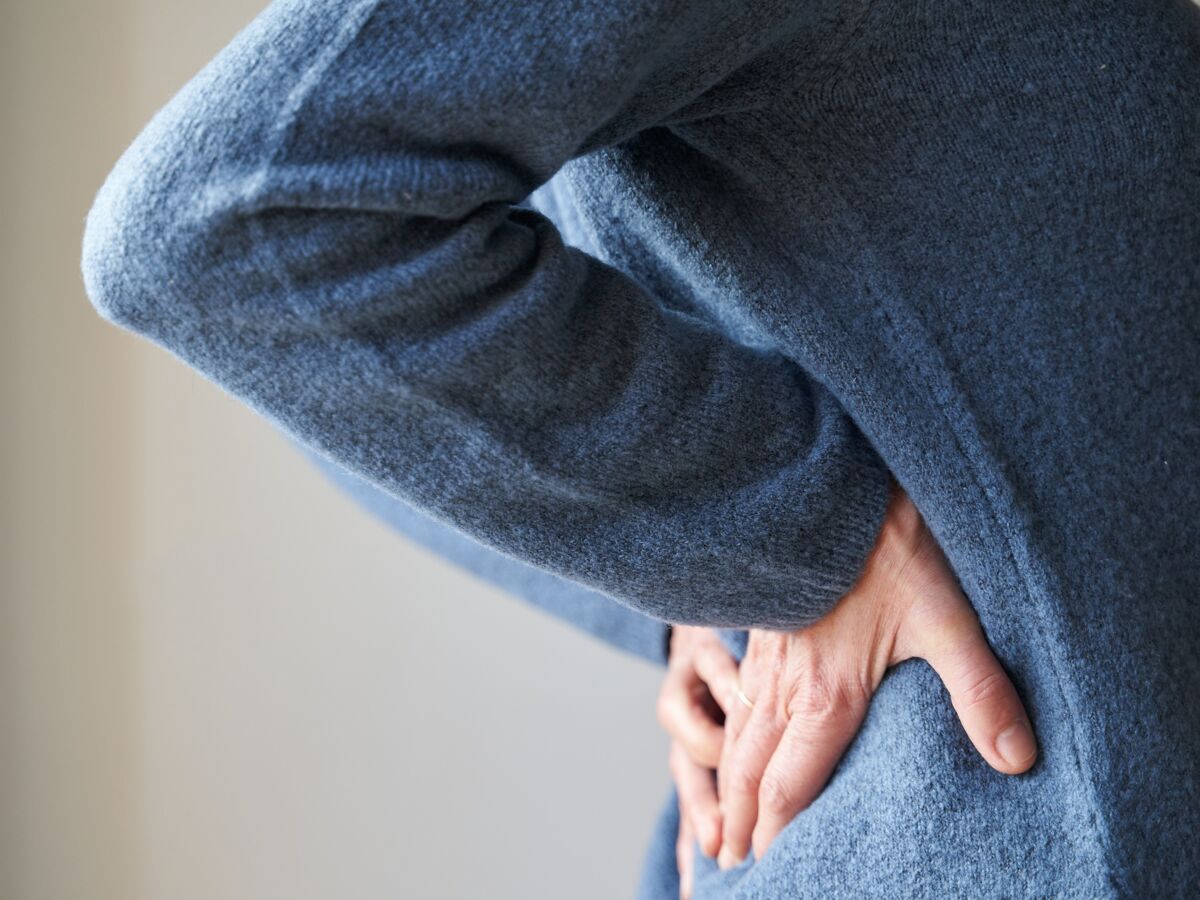In France, around 180,000 people suffer from ankylosing spondylitis, or around 0.3% of the population. It is a chronic inflammatory rheumatic pathology, which is characterized by damage to the spine and the sacroiliac joints of the pelvis, responsible for severe pain. This inflammatory disease can also manifest itself in the limbs and oscillates between periods of crisis and periods of calm or remission. It is accompanied by general symptoms such as severe fatigue, weight loss, a feverish state, etc. We take stock of the main symptoms.
1. Definition: what is ankylosing spondylitis?
Ankylosing spondylitis is a chronic rheumatic disease belonging to the family of spondyloarthropathies. It is characterized by the occurrence of arthritis (inflammation of a joint) mainly affecting the sacroiliac joints (which connect the pelvis to the base of the column) and those of the spine (spine), indicates Larousse medical. Generally, the disease appears between the ages of 20 and 30, although it can appear in adolescents or older people. Men are affected a little more than women, the latter more often tending to develop minor forms of the disease.
For some specialists, ankylosing spondylitis is an autoimmune disease. In this type of pathology, the body produces antibodies which will attack it. In the specific case of ankylosing spondylitis, the antibodies attack the ligaments and tendons attached to the vertebrae. This results in partial destruction which the body seeks to compensate for by creating new bone tissue. The vertebrae will then begin to weld together, making the spine rigid and painful.
2. HLA B27 gene, tobacco… What triggers an attack of ankylosing spondylitis?
The exact causes of ankylosing spondylitis are not known. However, we know that people carrying the HLA (Human Leukocyte Antigen) B27 gene are at greater risk of developing it. Furthermore, several risk factors are suspected: environmental factors including tobacco, or intestinal disturbances affecting the microbiota (intestinal flora) could be involved.
3. Symptoms: how does ankylosing spondylitis manifest?
The symptoms of ankylosing spondylitis are characterized by their location: in 80% of cases, the disease is triggered by pain in the lower back or buttocks. However, many other pathologies can trigger pain in the pelvis or sacroiliac joints. The pain felt often suggests sciatica. We also find general symptoms, such as stiffness in the morning upon waking, great fatigue associated with insomnia, weight loss, a more or less constant feverish state, night sweats, etc. However, some symptoms are more specific and should prompt consultation with a general practitioner or a rheumatologist without delay:
- The pain progresses in spurts, in crises, which is found in two thirds of cases. These attacks last a few days to a few weeks. In the remaining third of cases, the evolution is continuous, without a period of calm.
- The pain gradually moves upwards. They initially affect the pelvis, and, little by little, they affect the lumbar, dorsal and cervical vertebrae. It also happens that the limbs are affected.
Many other symptoms can be linked to ankylosing spondylitis without immediately thinking of mentioning it: eye inflammations (these eye problems appear before joint pain or precede them), psoriasis, heart or lung failure, kidney and/or genital inflammation.
4. Treatment: how is ankylosing spondylitis managed?
Strictly speaking, there is no treatment to cure ankylosing spondylitis. Treatment therefore essentially consists of relieving the symptoms of the disease and containing inflammation. In addition to drug treatment (based on non-steroidal anti-inflammatories), physiotherapy follow-up is organized to avoid too rapid stiffening. In recent years, biotherapies have appeared, and several molecules can be used in the context of ankylosing spondylitis. However, these medications are very powerful: they can therefore only be prescribed by a rheumatologist or in a hospital setting, and regular monitoring is essential.
In the case of ankylosing spondylitis, the doctor can offer recognition as a long-term condition (ALD) to the patient: this recognition will allow them to benefit from 100% coverage for examinations and care related to the disease. . Examinations are generally based on blood tests and magnetic resonance imaging (MRI).
5. Ankylosing spondylitis: can the disease be prevented?
It is not really possible to prevent ankylosing spondylitis. However, in families at risk with a genetic background (in the presence of the HLAB27 gene), it is very strongly recommended to practice physical activity on a regular basis. Even people who have already had the disease should be encouraged to exercise, if possible for at least half an hour three times a week. Whether or not in the context of ankylosing spondylitis, a lifestyle change to adopt good hygiene is essential. This involves in particular eliminating the consumption of alcohol and, where applicable, tobacco, and a healthy and balanced diet (which will at the same time limit weight gain).
Sources:
Read also :
⋙ Spondyloarthritis: symptoms, causes, treatments and prevention
⋙ Ankylosis: how to react in the event of loss of joint mobility?
⋙ Tendinopathy (tendinitis): causes, symptoms, treatments for tendon pain
